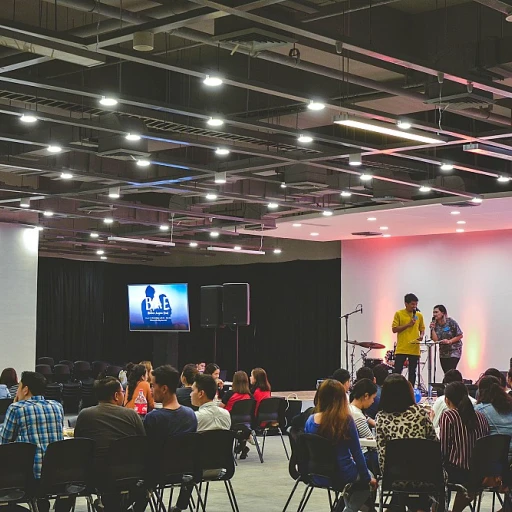
Understanding Situational Leadership
Grasping the Essence of Situational Leadership
The situational leadership model offers a profound understanding of leadership by acknowledging that no single leadership style is universally effective. Instead, it encourages leaders to adapt their approach based on the needs of their team members and the specific context of their work. This model empowers leaders to exercise flexibility and harness the full potential of their organizational resources, ensuring job satisfaction and enhanced productivity.
Research within leadership studies emphasizes that the effectiveness of any leadership approach depends on various factors, including the task at hand, the maturity levels of employees, and the specific business environment. A situational leader must navigate these variables, employing different leadership styles to cater to unique situations.
In leadership development, understanding situational leadership is crucial for fostering long-term growth and development. By shifting styles, a leader not only promotes a more inclusive and effective workforce but also nurtures an environment conducive to innovation and adaptability. To delve deeper into the potential of this adaptable approach, consider exploring unlocking the potential of adaptive leadership training.
Historical Context and Evolution
Exploring the Origins of Leadership Models
The concept of situational leadership emerged in the late 20th century as a dynamic contrast to more traditional, rigid leadership styles. As organizations evolved, there was a growing realization that no single leadership style could be universally effective in all scenarios. This understanding gave rise to models emphasizing adaptability and responsiveness, such as the situational leadership approach. In the context of leadership development, situational leadership became recognized through its capacity to tailor leadership styles to the degree of development and competence of team members. Such adaptability was crucial in addressing diverse team dynamics and individual needs, enhancing job satisfaction and organizational performance.Evolution of Leadership Practices
Historical shifts in work environments and employee expectations fueled the evolution of leadership theories. The move from an industrial to a more service-oriented economy highlighted the critical role of adaptive leadership models. Studies within organizational settings revealed that leaders who adjusted their styles—be it directive, supportive, or a blend—more effectively influenced team outcomes and employee engagement. As leadership studies expanded, they lent credence to flexible leadership approaches. Organizations recognized the importance of developing leaders who could pivot their styles in response to changing job requirements and team dynamics, a hallmark of situational leadership. This adaptability helped address emerging business challenges, meeting both short-term needs and long-term strategic goals. For those interested in diving deeper into the adaptive facets of leadership, our guide on unlocking the potential of adaptive leadership training offers valuable insights. In a world where change is constant, developing situational leaders who can navigate complexities becomes essential for effective leadership.Modern Applications in Leadership
Embracing Diversity in Leadership Styles
The timeless relevance of situational leadership in the modern era can be attributed to its unique ability to adapt to various challenges in today's dynamic business environment. Modern applications of this leadership model highlight the importance of leaders tailoring their approaches based on specific team and organizational needs, a necessity in the rapidly evolving workplaces.
In today's complex business world, a situational leader effectively modifies their leadership styles, aligning with the diverse personalities and skills within the team. This is not only beneficial for enhancing job satisfaction but also crucial for achieving long-term organizational goals. The contemporary leader operates with a flexible approach, applying different styles ranging from servant leadership to more task-oriented leadership, based on the situational demands.
Facilitating Optimal Team Performance
Team members stand to benefit significantly from this adaptable leadership approach. By recognizing the varying degrees of readiness and capability of employees, leaders can strategically foster an environment that promotes individual and team growth. Leadership studies suggest that such adaptability leads to more effective decision-making processes and improved employee engagement.
Modern organizations emphasize developing leaders who are capable of employing situational leadership strategies to nurture an inclusive and empowering culture. This approach not only facilitates better team performance but also helps equip members for future challenges, aligning with the core objectives of leadership development initiatives.
Adapting to Change: A Leader's Perspective
Adjusting Leadership for Organizational Change
Adaptability is a cornerstone for any effective leader in today's fast-paced business environment. Situational leadership provides a valuable framework, allowing leaders to modify their approaches based on the specific needs and dynamics of their teams or employees. By recognizing the importance of this flexibility, leaders can foster stronger team cohesion and job satisfaction. A situational leader acknowledges the unique styles and skills each team member brings to the table. This understanding facilitates a more personalized leadership style that can improve decision-making processes and organizational effectiveness. By adjusting their approach to align with the varying competencies and motivations within their team, leaders can empower team members and enhance overall performance. Recent leadership studies emphasize that situational leadership is not just a static model. It involves a continuous process of self-reflection and adjustment. Leaders must be willing to evolve and adapt as their organization or business landscape changes. In doing so, they embody an oriented leadership style conducive to long-term success. Studies found in resources like Google Scholar demonstrate that this adaptability often leads to improved employee engagement and better organizational outcomes. However, the effectiveness of situational leadership hinges on the leader's ability to assess their team accurately and apply the appropriate leadership style. This is not without challenges, as consistently choosing the right style requires keen insight and experience. Adapting to change is a pivotal skill for leaders aiming for sustainable development. As organizations face new challenges and shifts in their environment, the ability to adapt leadership strategies remains a crucial component of their success. Balancing varied leadership models and styles ensures that both immediate and long-term organizational goals are met in an ever-evolving business landscape.Challenges and Criticisms
Overcoming Hurdles: The Situational Leadership Debate
Situational leadership, often praised for its adaptability, is not without its set of criticisms and challenges. Leadership development professionals frequently engage in debates about the efficacy and applicability of this approach in varying organizational contexts. Here are some of the notable challenges:- Complexities of Implementation: The situational leadership model, which requires leaders to adapt their style based on the team members' needs and the demands of the work environment, can be complex to implement. The effectiveness largely hinges on the leader's ability to accurately assess the situation and apply the appropriate style. This adaptability is crucial for maintaining team coherence and job satisfaction.
- Subjectivity in Style Selection: A major criticism revolves around the potential subjectivity involved in deciding which leadership style to employ. Leaders must be well-versed in different leadership models and organizational dynamics to make decisions that align with both short-term and long-term objectives. The lack of a clear-cut process can lead to inconsistency in leadership decisions, impacting the overall organizational effectiveness.
- Demand for Continuous Development: As with any leadership approach, ongoing development is essential. Studies within leadership development suggest that situational leaders need continuous training to refine their decision-making skills and adapt to changing business environments. This requirement can be resource-intensive, as it necessitates a commitment from organizations to invest in training and leadership studies.
- Potential for Misalignment: Another challenge is ensuring alignment with the overarching business strategy. Situational leadership requires a dynamic approach to decision-making and team management. However, without careful alignment with organizational goals, leaders might veer off course, creating conflict between team objectives and wider business aims.












